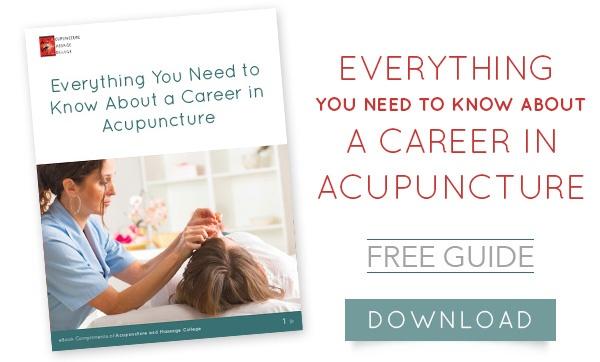In a previous article, we discussed the notion of health and illness in Traditional Chinese Medicine (TCM). According to TCM, illness arises as a result of specific yin-yang imbalances of the Functional Entities.
The functional entities are:
- The Five Fundamental Substances: Qi, Xue (Blood), Jinye (Body Fluids), Jing (Essence), and Shen (Spirit).
- Zang-fu: A Wu Xing cycle of 5 zang organs, 6 fu organs, and their functions
- Jing-luo (Meridians): The channels or meridians through which qi flows
As our students learn at acupuncture school, the functional entities are responsible for performing the five cardinal functions that maintain health within the body. They are: Actuation, Warming, Defense, Containment, and Transportation.
If there is an imbalance within the any of the functional entities, they will not be able to perform their cardinal functions, and as result, illness may arise.
As mentioned previously, Oriental Medicine does not evaluate an illness purely based on the symptoms a person is showing, but rather, on complex patterns of disharmony in the body.
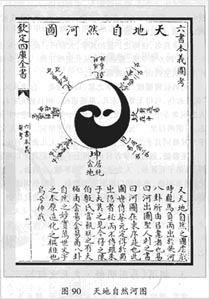
At the most basic level, these patterns are determined by Eight Principles, which measure either an excess (vacuity) or deficiency (stagnation) of qi in one the entities.
In this article, we will discuss the eight principles of diagnosis in Traditional Chinese Medicine.
The process of determining the actual pattern of diagnosis begins with an evaluation of bing according to the notion of the Eight Principles. The Eight Principles describe the basic qualities of a disease. This notion refers to four pairs of mutual opposites.
The Eight Principles (辩证) are:
1. Yin: Yin, along with yang is the most general classification for pattern diagnosis and it describes the relationship between the other three pairs of the Principles. Generally speaking, yin is Cold.
2. Yang: Yang, along with yin is used to describe the relationship between the other three pairs of the Principles. For example, Heat is Yang.
3. Interior: Interior describes diseases that manifest themselves in the Zang-fu organs or deep inside the body, such as qi, blood, and bone marrow. More broadly, it used to describe diseases that cannot be classified as Exterior.
4. Exterior: Exterior describes diseases that manifest themselves on surface of the body, such hair, skin, nails, and meridians. Its clinical features include body chills, fever, aversion to cold temperatures and winds, a weak pulse, and headaches.
5. Heat: Heat describes the absence of an aversion to Cold. If paired with an Exterior pattern, its symptoms can include a rapid pulse, fever, body chills, dehydration, and a sore throat. If paired with an Interior patter, its symptoms can include a preference for cold drinks, clear urine, and a slow pulse.
6. Cold: Cold describes an aversion to cold. If paired with an Exterior pattern, its symptoms can include body aches, a tense pulse, fever, body chills, and headaches. If paired with an Interior patter, its symptoms can include nausea, stomach pain, vomiting, and diarrhea.
7. Deficiency: Deficiency is used to describe a vacuity in qi, blood (Xue), or body fluids (Jinye). Depending on how it relates to Interior/Exterior and Cold/Heat, it can manifest as constipation, having a small appetite, dizziness, and slow pulse.
8. Excess: Excess is generally classified as any disease that can't be identified as a Deficiency pattern. Usually, it means that one of the Six Excesses is present. Depending on how it relates to Interior/Exterior and Cold/Heat, it can manifest as quick pulse, sweaty palms, and sharp stomach pains.
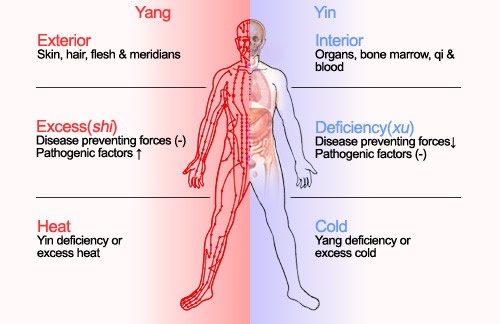
After a basic diagnosis of the diseases is given via the Eight Principles, the diagnostic continues and focuses on more specific conditions. After evaluating the present symptoms, a person’s condition is further evaluated as to how the specific entities (qi, meridians, Zang-fu, etc.) are affected.
Cause of Disease
Traditional Chinese Medicine does not strongly differentiate between the cause and effect of a disease. However, there are three major categories that are considered to give rise to disease. The three major categories of disease causes are:
1. External: Disease caused by the Six Excesses and bad qi.
2. Internal: Disease caused the by Seven Emotions or Seven Affects: Anger, Fear, Anxiety, Fright, Grief, Pensiveness, and Joy. These are said to effect the zang-fu organs.
3. Other Irregularities-Disease caused something that is neither external nor internal, such as having unbalanced diet or damage done by parasites.
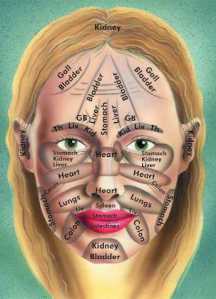
Four Pillars of Diagnosis
There are four methods of diagnostics in Traditional Chinese Medicine, which are often referred to as the Four Pillars of Diagnosis. They are:
1. Inspection: Inspection or “looking” focuses on visual analysis of the face, skin features, and particularly, the tongue. In TCM, the surface of the tongue corresponds to particular zang-fu organs and can reveal a lot about a particular disease. Therefore, the tongue diagnosis is considered a cornerstone practice in the diagnostic process.
2. Auscultation: Auscultation refers to the analysis of particular sounds. In TCM, there are five major types of sounds: shouting, laughing, singing, weeping, and groaning. Auscultation analysis extends to olfaction, which analyzes the smell of body odor, even though sound and smell are consider to be separate senses in the West.
3. Palpation: Palpation refers to analysis by feeling, particularly the wrist pulse, abdomen, and meridians points. The techniques for doing are complex and can years to learn.
4. Inquiry: Inquiry refers to analysis by asking questions about the person’s past health and habits. Traditionally, this included 10 questions, which ranged from diet to sleep pattern.
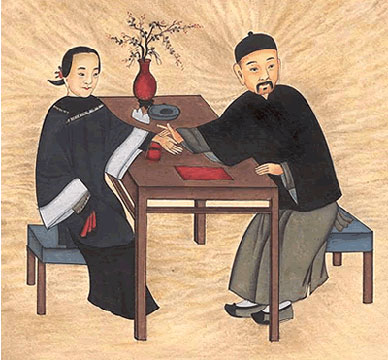
After recognizing a particular pattern of disharmony, a doctor will prescribe treatment based on the diagnosis that was given. The treatment can include the more common practices of Traditional Chinese Medicine, such as herbal medicine, acupuncture, and tui na massage, but also less common practices, such as cupping.
In the next article of the series, we will discuss the different modalities of healing in Traditional Chinese Medicine.
While learning the specific elements of TCM diagnosis and treatment can take several years, our Master’s in Oriental Medicine program is designed to be completed in just three. If you’re interested in learning more about a career in acupuncture and Oriental Medicine, download our free career guide below. Our school is located in Miami, FL.
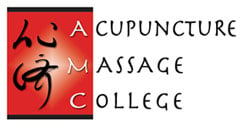
 (305) 595-9500
(305) 595-9500



